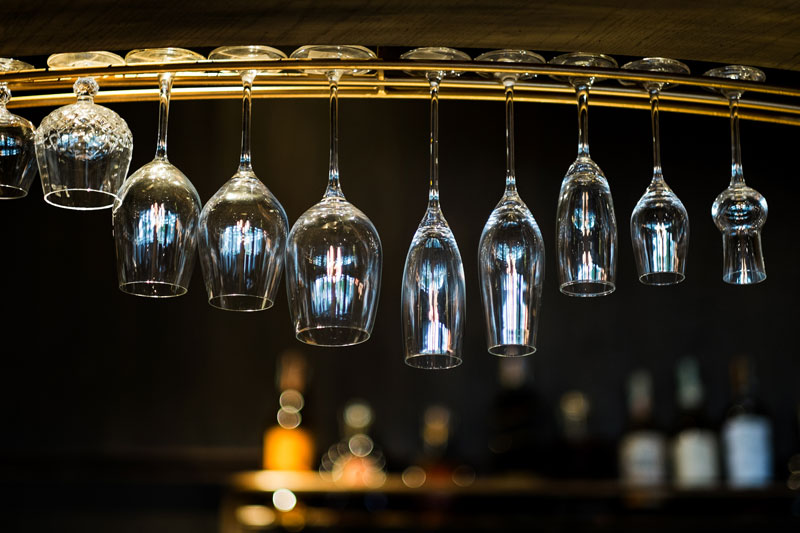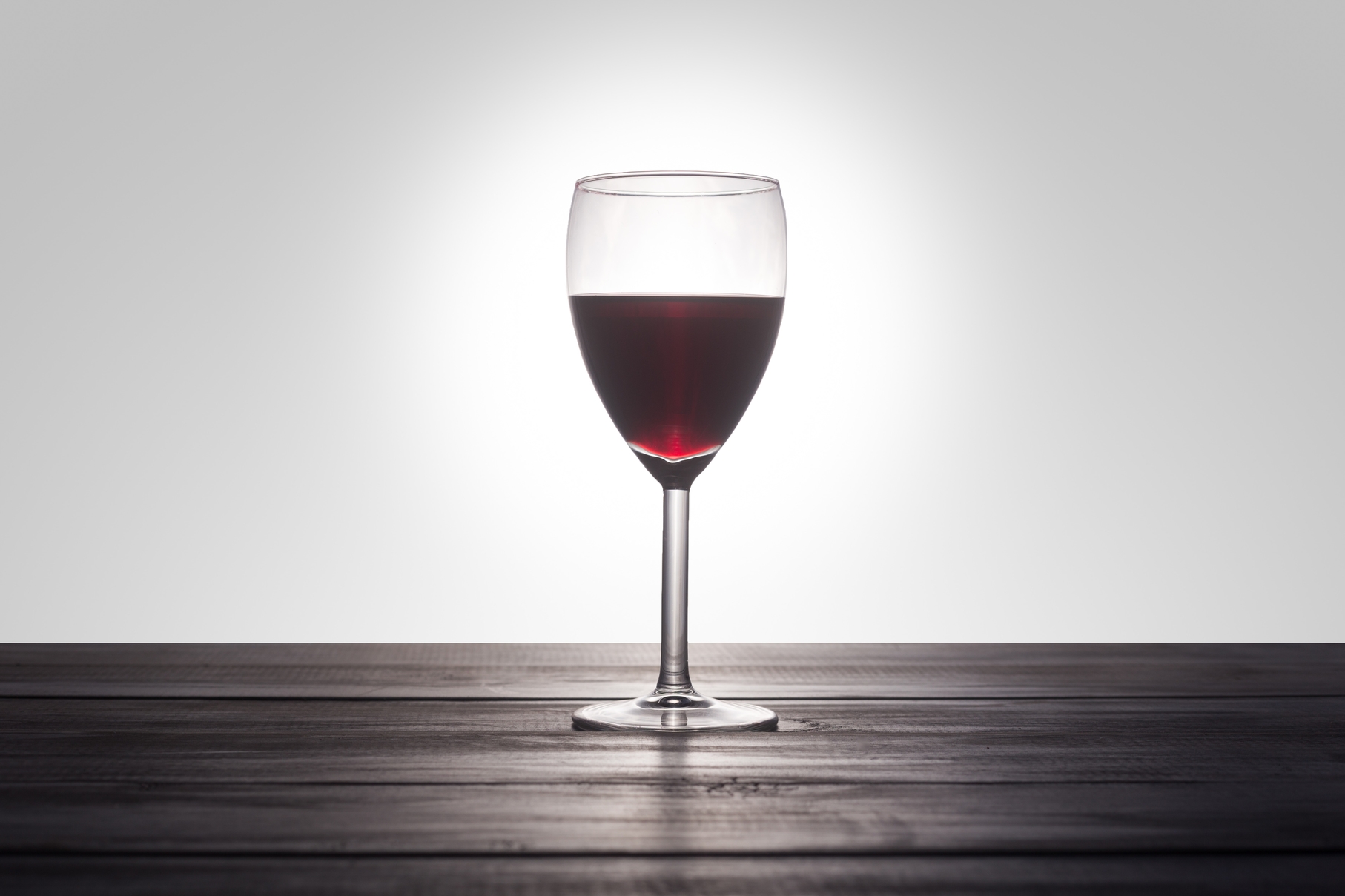The Physics of Wine Tasting: How Your Glass Shapes Flavour

Different glasses have long been recognised as being central to enjoying different alcoholic beverages. Glassware comes in all forms, whether that’s a snifter to help you get the most from a fine brandy, or a stemmed cocktail glass to add to the aesthetics of a Manhattan.
Wine glass shapes are no different, though many see them as a purely aesthetic choice, the shape does impact the flavour of the wine we drink. Although wine aficionados have professed this theory for some time, it was only in 2015 that it was proven that wine glass shapes affect flavour.
Scientists from the university of Tokyo discovered that the shape of a wine glass ensures that we can enjoy the aromas of the wine without it being disrupted by the presence of ethanol. The unique shape of a wine glass concentrates the actual aromas of the wine into the centre of the glass. The ethanol itself remains removed from the nose around the rim.
Read on to discover more about wine glasses and how your favourite wines will taste so much better when you use the right glass. If you’re a budding wine aficionado, take a look at our article on wine storage to discover the best way to keep your wine at its best.
The anatomy of a wine glass
For any amateurs who are only just entering the world of wine we’ll break down the components of a wine glass. Even for the wine lover, this should be a helpful recap. Who knows, you might learn something new.

Foot
This is the round, flat bottom of the glass. The foot varies in size based on the glass, ensuring that your drink doesn’t fall over.
Stem
Since wine should be served at a specific temperature (depending on the wine), the stem that juts out of the foot of the glass is enables you to hold your glass without warming the wine. Furthermore, holding your glass by the stem ensures that you won’t smudge the bowl, allowing you to take in all the visual elements the wine has to offer. On the other hand, brandy glasses are designed with a short stem to ensure that the beverage is warmed in your hand.
Bowl
The bowl is the part of the glass within which the wine actually sits. The vast majority of glasses have a bowl that tapers in slightly. This allows you to enjoy all of the aromas concentrated in the centre of the drink. Wine glass bowls vary in size, with more full-bodied reds needing a wider area to ‘breathe’ and release their complex flavours. Sparkling wines, however, require far smaller bowls to ensure that the wine stays bubbly.
Rim
The rim of a wine glass is found at the top of the tapered bowl and is the area where any ethanol should be concentrated. Thin rims are best for enjoying wine, as the liquid is not hindered on its way into your mouth and you are not distracted from the flavours.
How does wine glass shape affect flavour?
As we have mentioned, scientists discovered that wine glass shape affected the flavour of the drink itself in 2015. Rather than the glasses unlocking any hidden tastes, however, it is the way in which vapours from the wine reach our mouths that affect the flavour the most. The strength and intensity of a wine’s aroma is greatly affected by the size of the bowl in comparison with the size of the rim. A large bowl will allow a lot of aromas to be released, while a tapered rim will allow these scents to reach your nose, pushing any overpowering hints of ethanol out to the rim.
Although studies suggest that olfaction is the key to 80% of the wine tasting experience, flavour is not entirely governed by smell. When we think flavour, we tend to think of taste. So, how do wine glass shapes affect the actual taste of the wine?
The taste difference between glasses is most affected by the way in which you move your head while drinking a wine. When tasting a wine from a wide-rimmed, large-bowled glass you tilt your head forwards. On the other hand, drink from a narrower glass and you’ll tilt your head back. This changes the speeds at which the wine enters your mouth and the different areas of your mouth that it touches. So, for instance, when you drink a full-bodied Bordeaux from a glass with a large bowl, the wine washes over your tongue, hitting all of your tastebuds and offering a rich and heavy mouthfeel.
Despite wine glasses being designed to affect your taste in this way, unlike many outdated diagrams may show, the taste buds are spread evenly across the tongue. While sherry glasses may have been designed to ensure that the sweet fortified wine reaches the ‘sweet’ part of the tongue, that’s not actually how our sense of taste works.
So, is it just the way we smell our wine that is affected most by different glass shapes? Or was Chilean poet Pablo Neruda right to serve his wine in different coloured glasses designed to imbue the drink with a specific mood? Well, to an extent, Neruda’s coloured glasses would impact the flavour of his wine. Oxford professor Charles Spence has spoken on the concepts of ‘superadditivity’ and ‘subadditivity’ to describe the way in which our perception of taste is influenced by our surroundings. His research concluded that if we taste something in an attractive, comfortable setting, we will perceive the drink itself to be better tasting. Interestingly enough, the setting in which we drink our wines may have some of the greatest impacts on the flavour of the beverage.

Therefore, if we drink from a particularly beautiful glass, suited to the wine itself, the glass can produce a far superior flavour – or at least the sensation that there is a superior flavour. While we are most affected by the aroma of our wines, the shapes clearly impact the flavour, and overall wine experience, in more ways than previously expected.
Different wine glass shapes
As we have made clear, wine glass shapes affect the flavour of a wine in a number of ways. Most wines have a specific glass from which you should drink from. Consume a wine from the wrong glass and you risk failing to notice the subtle flavours locked within the drink. Here’s our brief guide to the glasses you need to know. You’ll be sure never to serve a Pinot Noir in a Sauvignon Blanc glass again!
Red:
Red wines tend to be more full-bodied than whites, with their robust flavour and rich aromas needing more room to breathe and develop. As such, expect red wine glasses to have large bowls.
Cabernet/Merlot
Cabernet and merlot wine glasses have an average stem and a large bowl with only a slight taper, making the rim larger than that found in other glass varieties. The reason for this large rim is to ensure that a lot of oxygen can get in contact with the liquid itself. Exposing the wine to more oxygen allows complex fruity flavours to develop, while also lessening the impact of bitter tannins on the taste.
Shiraz
Shiraz glasses tend to be smaller than other red wine glasses. These glasses have a taller bowl with a sharp taper that concentrates notes of fruit to the centre of the glass. Tannins will still be present, although lessened and pushed to the rim rather than the nose.
Pinot Noir
Pinot Noir glasses can differ dramatically from other wine glasses by having a rim that tapers outwards. This directs the intense flavours of the wine directly onto the nose. As we’ve addressed, this can have a big impact on the flavour of the wine itself. Pinot noirs are recognisable by looking at their large bowl. Pinot noir bowls are the widest of any wine glass and really allow the wine to breathe and develop hidden flavours.
White:
As the flavours are less intense in white wines, they don’t require as much breathing room as reds. As such, white wine glasses can be a lot smaller overall. These glasses will often have thinner bowls and sharper tapers than you’re likely to find in any red wine glass.
Chardonnay
Chardonnay glasses have a large bowl, similar to the shape of a Pinot Noir glass. Fairly complex for a white, Chardonnay wines need to encounter more oxygen to release their flavours. Serving them in a glass with a larger bowl allows the wines to come into contact with more oxygen.
Sauvignon Blanc
Sauvignon blanc glassware is most recognisable from the narrow, tapered bowl that defines the glass. This shape makes it easy to detect the aromas of the wine, with the taper funneling ethanol out of the glass. The narrow shape is designed to keep oxygen out of the glass, thus keeping the wine fresher for longer.
Riesling
Riesling glasses ensure that wines made from these German grapes are kept chilled. These glasses feature a tall stem to prevent any body heat from affecting the wine’s temperature, ensuring it is served at the correct, cold temperature. They also have a tall bowl that concentrates the fruity notes of the wine towards the rim of the glass.
Rosé:
The best rosé wine glasses should be tulip shaped, tapering outwards at the top. This allows you to take in all the aromas of this more subtle wine that has often played second fiddle to dominant red and white varieties. While more standard wine glasses have been used as the dominant drinking vessels for rosé wines, wine experts now advise that you invest in dedicated rosé glasses to bring the most out of the wine.
Sparkling:
Sparkling wines should be consumed from a flute, Champagnes and Prosecco included. The long stems keeps the wine chilled, while a narrow bowl ensures that the wine stays suitably sparkling. While the classic ‘coupe’ style Champagne glass was popular for many years, it’s actually rather useless; the bowl is far too wide to keep sparkling wine at its bubbly best.
Vintage Champagne is an outlier in the sparkling wine world. It tends to be far more complex than standard sparkling wine, therefore requiring a larger bowl to really reveal its flavour. There are specialist vintage Champagne glasses, but these are rarely used. For most occasions, a small white wine glass would suffice if you don’t have a vintage glass at hand.
For further information on creating a luxury kitchen unique to your vision, get in touch with the Extreme Design team for a truly bespoke kitchen design service.

